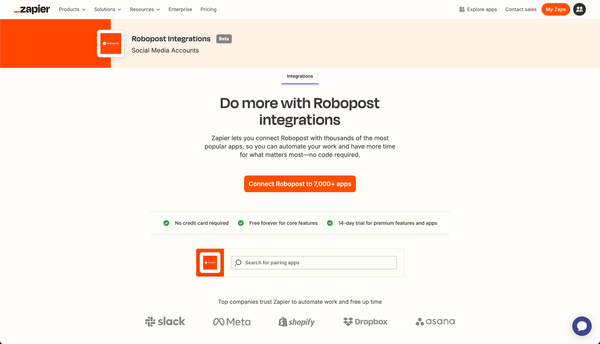Building a Community: Social Media Strategies for Long-Term Growth
Explore key strategies for nonprofits to build a lasting digital community and engage supporters on social media for growth.

In today's digital world, social media is incredibly powerful for nonprofits. It's more than just getting likes or retweets; it's about creating an active online community that supports your mission. To craft a successful social media strategy, you need to understand your audience, set clear goals, create engaging content, and use the right tools. This article will help you build a community with social media strategies aimed at long-term growth.
Key Takeaways
- Know your target audience so you can create content that they connect with and feel part of.
- Set clear, measurable goals that match your nonprofit's mission and regularly check your progress to adjust your strategies as needed.
- Use storytelling, visuals, and multimedia to connect with and inspire people, and include calls to action to turn engagement into support.
- Encourage two-way communication by talking with your audience, sharing supporter stories, and hosting interactive events to build a stronger community.
- Stay flexible by keeping up with updates on social media platforms, embracing new trends, and revisiting your strategy to stay relevant and effective.
Understanding and Engaging Your Audience
Identifying Your Target Demographic
To build a successful social media strategy, you need to know who your audience is. Start by looking at demographic data to see where your potential supporters are most active online. This helps you choose which social media channels to focus on for the best engagement.
- Collect data on your current supporters through surveys or by analyzing their social media activity.
- Create donor personas to represent the characteristics of your ideal audience.
- Use the information from your data to customize your content and engagement strategies.
By understanding your audience's online habits and preferences, you can create a strategy that really connects with them. Looking at successful campaigns from other nonprofits can also give you useful insights into audience behavior and content preferences.
Creating Content That Resonates
To really connect with your audience, your content needs to feel personal. Understand what interests your community and create messages that speak directly to them. Sharing stories about people affected by your work often leads to higher engagement than general updates about your organization.
When creating content that resonates:
- Be authentic; aim for real stories rather than overly polished messages.
- Use images and videos to enhance your stories.
- Be consistent with your content to build trust with your audience.
It's not just about how often you post, but how well your posts create a sense of connection and empathy. Share impactful journeys and celebrate the commitment of those involved in your cause to inspire action and keep your audience engaged.
Strategic Goal-Setting for Social Media Success

Defining Clear Objectives
Setting clear, measurable goals is essential for a successful social media strategy. Your community's growth depends on having specific objectives that match both immediate actions and your organization's overall mission. Start by identifying what success looks like for your community, such as more donor involvement or increased volunteer sign-ups.
- Define what success means for your community.
- Make sure your goals can be measured and tracked.
- Align your goals with your organization's long-term mission.
Clear goals guide your strategy and help you measure the performance of your content. This clarity allows you to make adjustments as needed, ensuring your social media efforts stay aligned with your mission and respond to your audience's preferences.
Aligning Goals with Nonprofit Mission
To keep your social media efforts effective and lasting, make sure each goal matches your nonprofit's overall mission. This alignment gives direction and ensures every social media activity supports your organization's bigger goals.
- Define success based on your mission, like increased awareness, donor engagement, or community support.
- Set measurable benchmarks to track progress, such as follower growth, engagement rates, or fundraising targets.
- Regularly review and adjust goals to stay relevant and respond to your audience's changing preferences.
Leveraging Content to Connect and Inspire

Storytelling with Impact
Storytelling is a powerful way for nonprofits to connect with their audience. By sharing real stories of impact, organizations can create a sense of connection and empathy. These stories not only grab attention but also inspire action and drive meaningful engagement.
To make your storytelling effective, focus on stories that align with your audience's values and goals. Here’s a simple guide:
- Identify the stories that matter to your audience.
- Share stories of transformation and dedication.
- Use real visuals to enhance the story.
- Measure engagement to see what gets attention.
- Be consistent with your storytelling.
Each post helps build a united and passionate community. Let meaningful stories guide your content, and watch your community grow stronger with each shared experience.
Creating Calls to Action that Convert
The key to social media engagement is getting your audience to take action. Focus on your goals and make sure your call to action (CTA) is not just clear but also compelling. A good CTA can turn passive readers into active participants, driving them to do what matters most for your community's growth.
Effective CTAs are straightforward, so there’s no confusion about what you want. Whether it’s subscribing, sharing, or donating, your audience should know exactly what to do. Adding emotion and urgency with phrases like "Join us today" or "Help us make a difference now" can make your message stronger.
Also, where you place your CTA is crucial. Putting it in engaging content helps smoothly guide your audience from interest to action.
Fostering Two-Way Communication and Community

Encouraging Dialogue and Feedback
To build a thriving community on social media, you need to create two-way communication. Encouraging conversation and feedback isn't just about posting content; it's about engaging with your audience. By asking for their opinions through surveys or polls, you give them a chance to share their thoughts. Quickly responding to comments and questions shows you value their input and are listening.
Here are some practical steps to improve dialogue and feedback on social media:
- Host live Q&A sessions to answer questions and address concerns in real-time.
- Highlight specific donors or volunteers in your posts to acknowledge their support.
- Create posts that ask direct questions to encourage discussion and show you care about their opinions.
The goal is to turn passive followers into active participants in your nonprofit's mission. This creates a sense of belonging and community that goes beyond the digital space.
Showcasing Supporter Stories
By sharing real stories of impact, you can capture attention and create a sense of connection and empathy. Sharing the transformative journeys of those you help or the dedication of your volunteers can inspire action and increase engagement.
Effective storytelling helps nonprofits build a community of passionate supporters. Each story shared strengthens the community. Consistency in sharing these stories is important for maintaining engagement.
Understanding what resonates with your audience is crucial. Analyze how people engage with personal stories compared to general updates to guide your content strategy. High-quality photos or videos can greatly enhance your connection with your audience.
Hosting Interactive Events and Live Sessions
Interactive events and live sessions are great for strengthening community ties and making your audience feel connected. Plan events that are both informative and engaging, like webinars with live Q&A sessions, virtual networking games, and real-time polls. These activities encourage active participation and can greatly increase engagement.
Here are some ideas to enhance your interactive events:
- Use live streaming to reach a wider audience.
- Encourage user-generated content to create a collaborative atmosphere.
- Make sure your events are accessible on different devices to include as many people as possible.
The goal is to create a lively, interactive space focused on dialogue and building a community.Adapting to Changing Social Media Landscapes

Embracing New Technologies and Trends
As platforms change, nonprofits have new ways to connect with their audience.
- Augmented reality (AR) experiences can make causes more relatable.
- Chatbots and AI tools can provide instant support and interaction.
- Post scheduling tools like Robopost help you publish content at the best time.
Keeping up with industry best practices and trends is essential. Using user-generated content can turn your supporters into storytellers for your cause. Ensuring accessibility across all devices means everyone in your community can stay connected. Regularly updating your strategies will help keep your social media efforts relevant and effective.
Revisiting and Revising Strategies Regularly
In the fast-paced world of social media, standing still means falling behind. It's important to regularly review and update your strategies to match current trends and audience expectations. This should be done based on a careful analysis of what's working and what isn't.
- Check analytics to see how your posts are performing and how engaged your audience is.
- Survey your audience to learn about their changing needs and preferences.
- Compare your growth to your goals and adjust your tactics as needed.
The aim is not to change just for the sake of it but to improve your strategies to better serve your mission and audience. This proactive approach will help you stay ahead and build a lively, engaged community.
Conclusion
To build a strong online community for your nonprofit, social media is a powerful tool. By understanding your audience, setting clear goals, and fostering genuine engagement, you can turn passive viewers into active supporters of your mission. Long-term growth depends on consistently sharing compelling content that resonates with your audience and encourages interaction. As the digital world changes, keep updating your strategies to match your audience's evolving preferences. This will help you grow your community and increase the impact of your nonprofit's work. Let's use social media to create lasting connections and drive meaningful change together.
